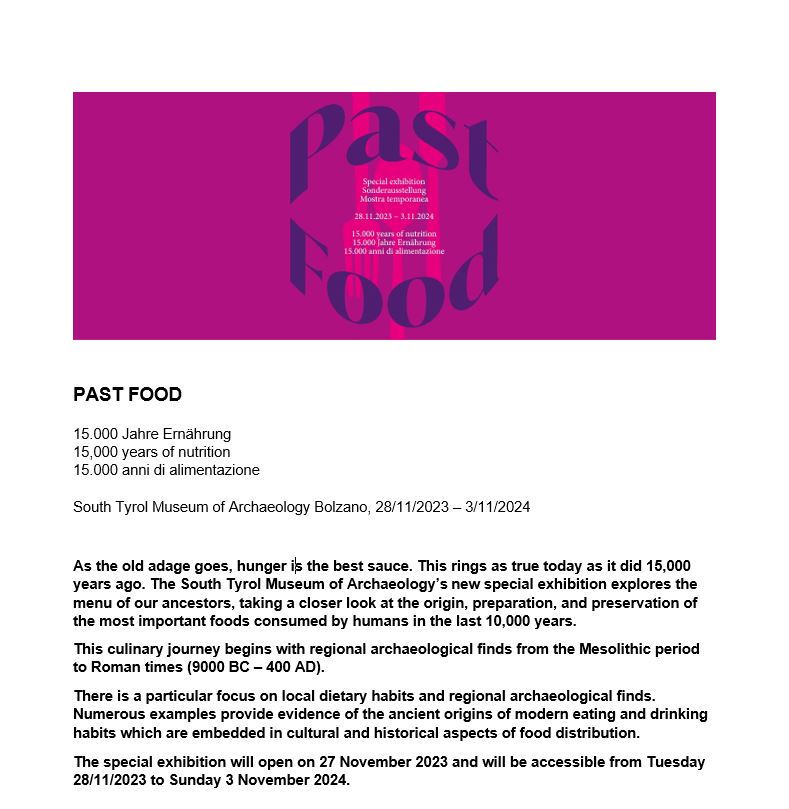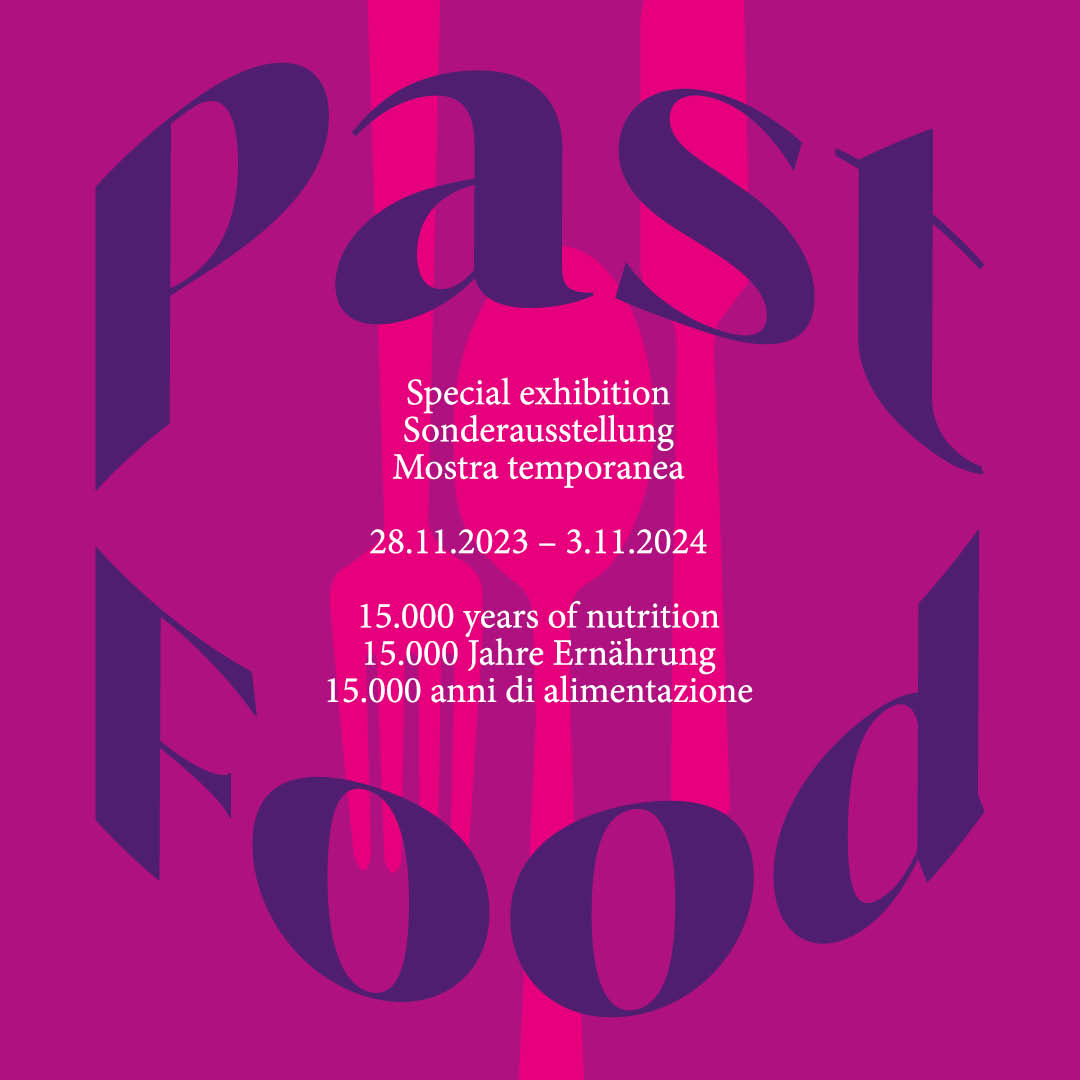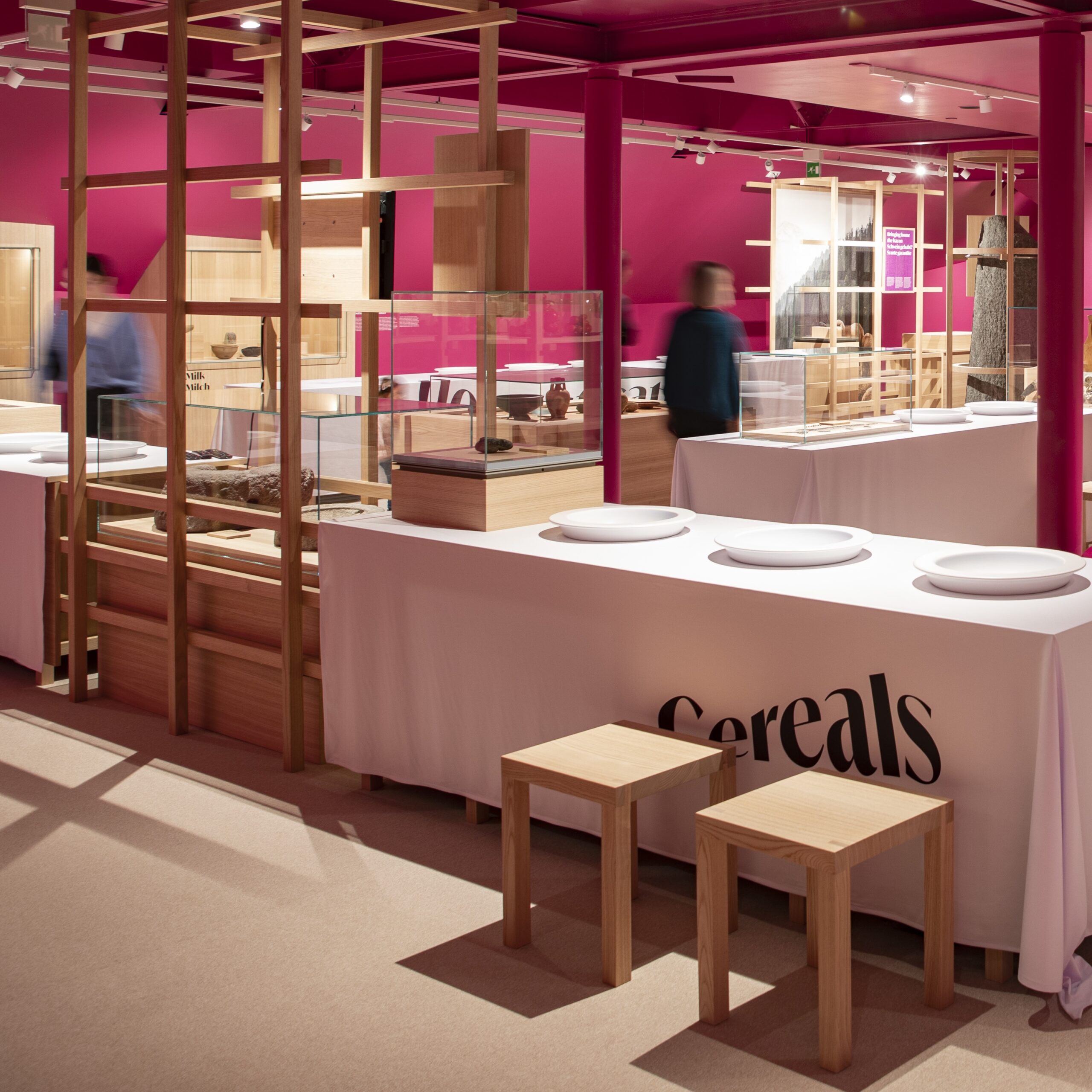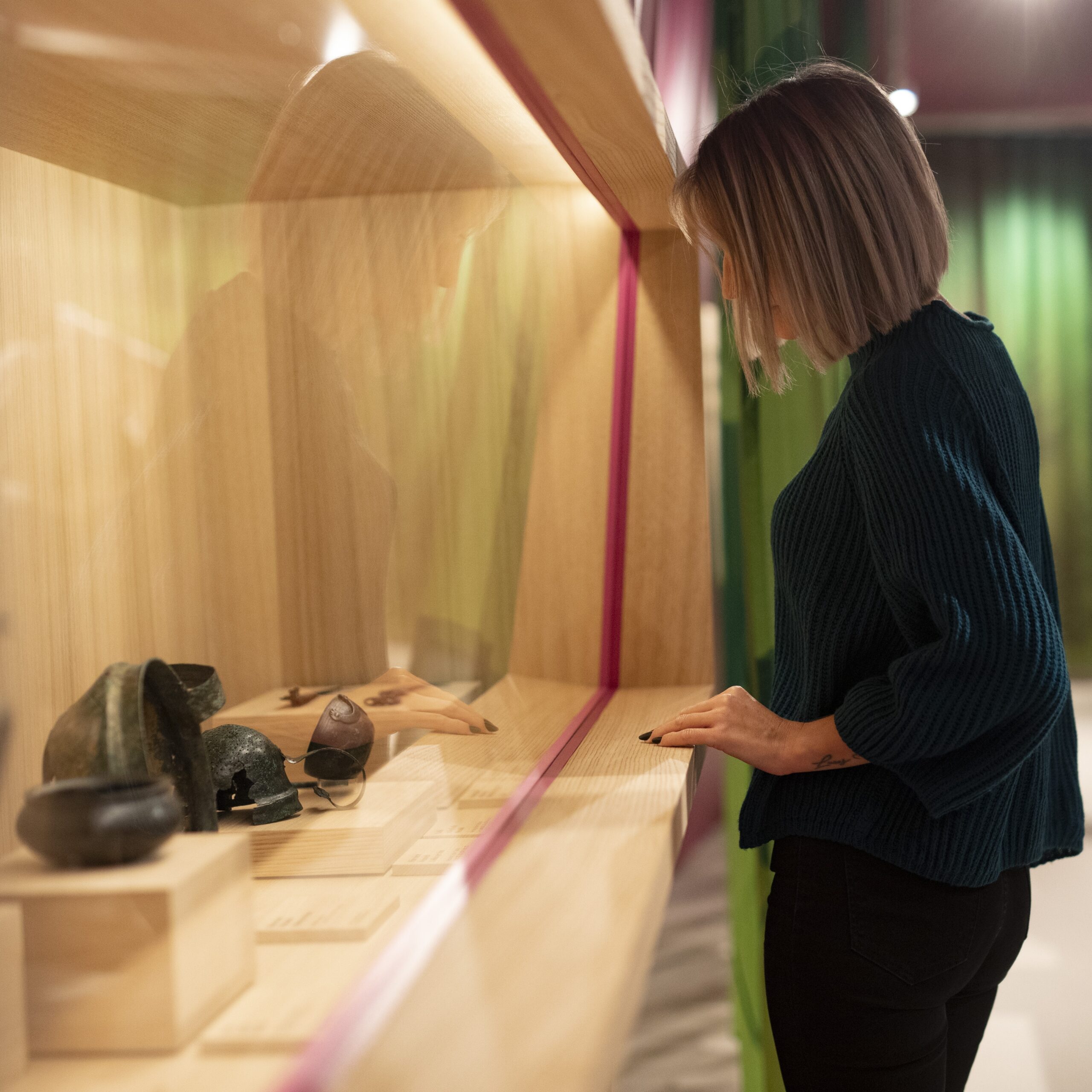PAST FOOD - 15,000 years of nutrition
Temporary exhibition at the South Tyrol Museum of Archaeology
November 28th, 2023 until November 3rd, 2024
As the old adage goes, hunger is the best sauce. This rings as true today as it did 15,000 years ago. The South Tyrol Museum of Archaeology’s new special exhibition explores the menu of our ancestors, taking a closer look at the origin, preparation, and preservation of the most important foods consumed by humans in the last 10,000 years.
This culinary journey begins with regional archaeological finds from the Mesolithic period to Roman times (9000 BC – 400 AD).
There is a particular focus on local dietary habits and regional archaeological finds. Numerous examples provide evidence of the ancient origins of modern eating and drinking habits which are embedded in cultural and historical aspects of food distribution.
The special exhibition will be accessible from Tuesday 28/11/2023 to Sunday 3 November 2024.
Dinner is served
The exhibition
An ambience of modern table etiquette sets the mood for visitors to embark on a culinary journey into the past. The first stage of the exhibition offers a historical overview of the origin and preparation of the most important foods in Europe and the Alpine region. Archaeological remnants of food and equipment from different time periods provide exciting insights into the production, preparation, and consumption of foods since prehistory.
Cultural and historical aspects of nutrition and food history are served on interactive plates. A pantry with interactive stations opens doors to interesting facts and curiosities about dietary habits and needs.
The journey ends with a replica of a Roman latrine complete with graffiti of that period. It not only reveals information about the eating habits of our ancestors, but also shows that a place which is usually quiet today could have once been a lively place to meet for all manners of business.
A feeding frenzy
Basic foodstuffs and their procurement
MEAT FROM WILD ANIMALS AND FISH have been important sources of food since the Stone Age. As humans began to settle in the 6th millennium BC, animals such as sheep, goats, cattle, and pigs were introduced to Europe and South Tyrol, followed by chickens from the Iron Age onwards.
Archaeological finds show that milk was processed into butter, yogurt, and cheese from the Neolithic period onwards.
GRAIN was the main staple food around the world in the past just as it is today. Alpine hunter-gatherers learned about grain cultivation and different varieties of grain from Middle Eastern farmers who migrated to Europe in several waves 8,000 years ago. Einkorn, barley, and emmer were the dominant varieties in the Neolithic and Copper Ages (6000 – 2000 BC), while Alpine settlements during the Bronze and Iron Ages mainly grew spelt and millet. Rye appeared in the Alpine region in Roman times (700 BC – 476/480 AD).
Immigrants from Anatolia also brought protein-rich legumes such as lentils, peas, and broad beans in their luggage. In the 4th millennium BC, spice plants from the Mediterranean region such as celery, parsley, and leek arrived in the Alpine region.
FRUIT VEGETABLES WINE
Wild fruits made a significant contribution to nutrition in the past. The main things gathered were fruits and some of these are still highly valued and processed by the local population today: hazelnuts, raspberries, wild strawberries, blackberries, rowan berries, blueberries, sloe berries, etc. These vitamin-rich fruits were immensely important in prehistory and early history as they ensured a balanced diet. Fruit such as apples, pears, etc. have been documented in Europe dating to around 1000 BC at the end of the Bronze Age; systematic fruit cultivation has been practiced since Roman times. Targeted cultivation of grapes for wine production first appeared in South Tyrol in the 5th century BC.
It is difficult to detect plants in the diet. However, vegetables found in the Mediterranean region, such as fennel, beets, and bottle gourds were spread across Europe through the Roman Empire.
Honey was collected from wild bees to sweeten meals and later it was also collected from specially created beehives.
The special exhibition can be visited from 28/11/2023 to 3/11/2024.
Curator team of the special exhibition: Andreas Putzer, Vera Bedin, Margit Tumler, Günther Kaufmann, South Tyrol Museum of Archaeology
Designer: DOC a Communication Group, Bolzano
PHOTO DOWNLOAD also available at the media archive (Temporary exhibition PAST FOOD).
The use of the images is free of charge if the copyright is correctly indicated.
PRESS CONTACT
Katharina Hersel
South Tyrol Museum of Archaeology
Museumstr. 43, I-39100 Bolzano
T +39 0471 320114
press@iceman.it
www.iceman.it
Facebook & Instagram: OetziTheIceman
DOWNLOAD FILES









